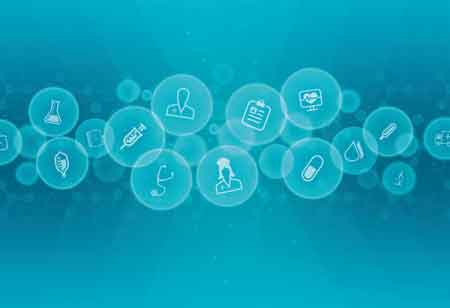Thank you for Subscribing to Healthcare Business Review Weekly Brief
Be first to read the latest tech news, Industry Leader's Insights, and CIO interviews of medium and large enterprises exclusively from Healthcare Business Review
An Overview of Hospital Revenue Cycle Management Systems
While hospitals, solo practitioners, and larger healthcare systems are known for saving lives and providing high-quality healthcare, each business must establish effective financial procedures and guidelines.

By
Healthcare Business Review | Friday, April 28, 2023
Stay ahead of the industry with exclusive feature stories on the top companies, expert insights and the latest news delivered straight to your inbox. Subscribe today.
Investing in a comprehensive hospital revenue cycle management system that integrates with existing healthcare solutions can provide significant benefits in terms of efficiency.
FREMONT, CA: While hospitals, solo practitioners, and larger healthcare systems are known for saving lives and providing high-quality healthcare, each business must establish effective financial procedures and guidelines. The healthcare revenue cycle management process plays a crucial role in this process.
The administrative and clinical tasks connected to claim processing, payment, and revenue generation are managed by institutions using the financial process known as healthcare revenue cycle management. Identification, management, and collection of patient service income make up the process. For healthcare organizations to continue operating and providing patient care, the financial process is essential. Healthcare revenue cycle management is used by facilities to collect money and then cover costs.
Important Features for Hospital Revenue Cycle Management Systems
1. Cloud Availability: Hospital revenue cycle management systems should be available on the cloud, making it accessible from anywhere with an internet connection. Cloud-based systems provide an added layer of security and eliminate the need for expensive servers and IT teams. Additionally, cloud-based systems ensure business continuity in case of a disaster or data breach.
2. User-Friendly Interface: A user-friendly interface is an essential feature of any software, including hospital revenue cycle management systems. An interactive interface means that users have an easier time working on the platform and carrying out workflows. Furthermore, a user-friendly system will result in staff getting accustomed to it faster, resulting in lower training costs and fewer losses in employee time.
3. Eligibility Verification: Eligibility verification is one of the slowest and most tedious jobs in healthcare revenue cycle operations. An effective hospital revenue cycle management system can verify claims and fetch information on every patient's insurance coverage in a few short steps. This feature can minimise errors in the entire claims procedure, resulting in an accelerated workflow, reduced wait times, and improved patient outcomes.
4. Claims Tracking: Submitting claims with everything in order is essential for hospitals as well as smaller practices. An integrated hospital revenue cycle management system can check the status of claims in real time and highlight errors. This feature results in resubmitting denials without having to wait and improves the overall healthcare management processes and clinical outcomes in the long run.
5. Automating Duties: Automating tasks with hospital revenue cycle management systems provides an easy and efficient way to store and manage billing records. To facilitate smooth electronic data interchange, healthcare RCM platforms should integrate seamlessly with other automated healthcare solutions and patient engagement systems.
6. Claims Analytics: Claims analytics is a significant part of hospital revenue cycle management. An effective revenue cycle management software should be able to predict patients at risk and analyse claims, revealing valuable patterns in the claims workflow and highlighting potential missed payments, underpayments, and forecast possible decreases in your bottom line.
7. Ease of Pre-Authorisation: Simplifying pre-authorisation enables doctors to deliver care sooner, improving the overall workflow of the hospital and revenues. Faster pre-authorisation also helps patients avoid the anxiety of wait times before their procedures begin.






